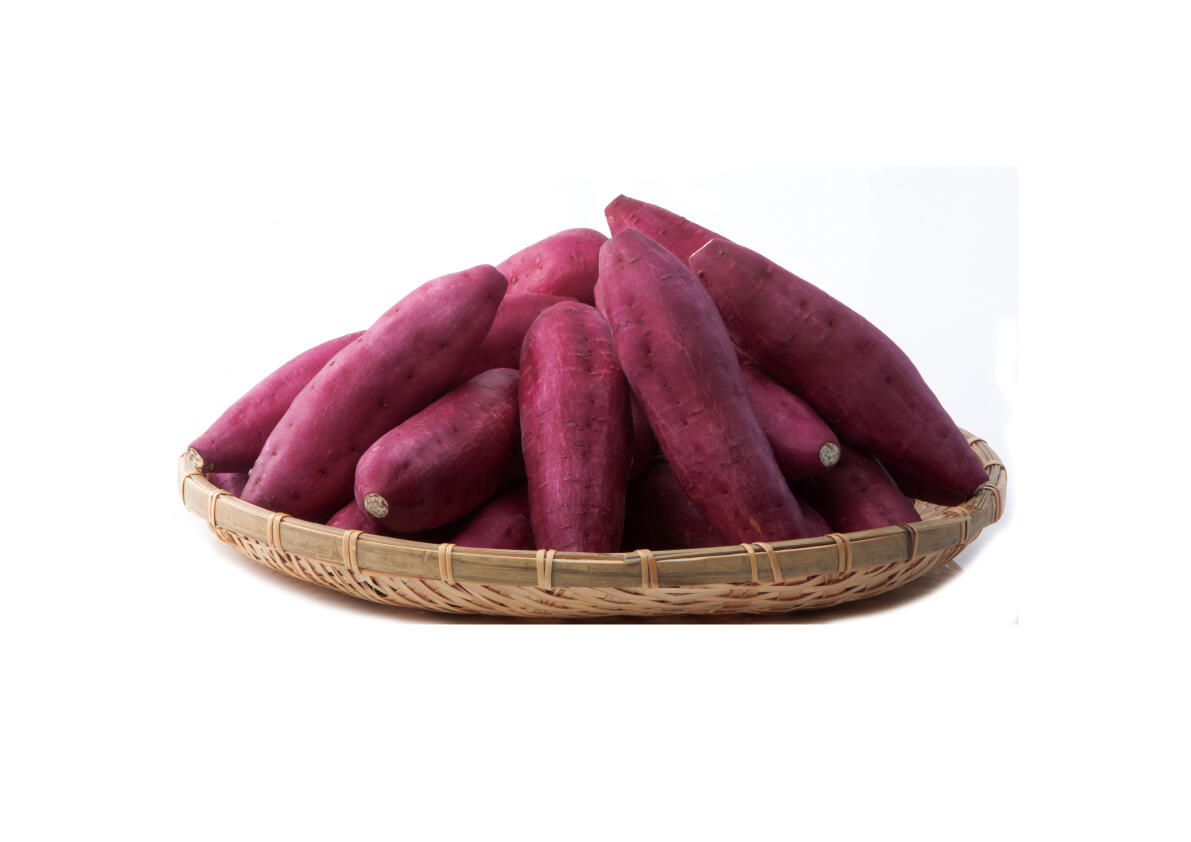Yamadai Kansho
| Registration Number | 64 |
|---|---|
| Name of the GI | Yamadai Kansho |
| Class | Vegetables/ Cereal grains/Pulses |
| Date of Protection | 2018/08/06 |
| Producing Area |
Miyazaki Prefecture
Kushima City |
| Applicant - Name and Address | Kushima City Otsuka District Headquarters, JA Miyazaki 5237-1 Oaza Naru, Kushima City, Miyazaki Prefecture |
Producing Area
Yamadai Kansho is a sweet potato with a beautiful appearance characterized by bright red skin and superior gloss.
It has citrine yellow flesh that becomes pleasantly crumbly giving hot and flaky texture when cooked, along with refined sweetness.
As a result of producers' efforts, since 1960, to ensure a stable supply of high-quality sweet potato for fresh produce markets, Yamadai Kansho is so highly recognized by market participants in western Japan, the primary destination of shipment, that they say, "When it comes to kansho (sweet potato), Yamadai Kansho is the first choice."
Miyazakibeni, a strain of the variety Kokei 14, is used as a cultivar for the production of Yamadai Kansho; however, Kokei 14, or a variety derived from Kokei 14 but other than Miyazakibeni may be selected in the event of natural disaster, etc. The cultivar is grown through one of the following three methods of cultivation: super early harvesting tunnel cultivation (planted around January to March and harvested around June to July), early harvesting cultivation (planted around March to April and harvested around July to August), and late harvesting normal cultivation (planted around May to June and harvested around September to November).
After harvesting and carefully removing the fibrous roots, the sweet potatoes are sorted in accordance with 4-grade quality criteria for shape and appearance and 7-grade sorting criteria for weight which are prescribed in the JA Kushima City Otsuka Standards for Fresh Produce Kansho.
The producing area of Yamadai Kansho, Kushima City, is the southernmost part of Miyazaki Prefecture facing the Hyuganada Sea(1) on the east and Shibushi Bay (2) on the south, with a warm climate due to the Kuroshio Current (3) flowing offshore. Consisting mainly of volcanic ash, the soils in Kushima City are drain well, which makes the area suitable for growing sweet potatoes.
Producers in the area started growing sweat potatoes for fresh produce markets in the 1960s, and have since established a year-round shipment system based on cultivation for early shipment that takes advantage of the warm climate and a unique method of storage during winter. Through their continued efforts to meet the varying demands of different markets in terms of shape and size, such as sorting in accordance with strict criteria, Kushima City has been established as a leading producer of sweet potatoes for fresh produce markets in western Japan.
As of 2016, Yamadai Kansho is produced by 181 member farms of the producers' group in the planted area of 500 ha, and the annual shipment has reached 10,000 tons, which accounts for approximately 80% of production in Miyazaki Prefecture. Further, Producers were the first in Japan to export sweet potatoes to Hong Kong in 2003, and have been actively seeking to export Yamadai Kansho even today.
- Hyuga Sea: The offshore area that lies between Cape Toi located at the south end of Miyazaki Prefecture and Tsurumisaki in Saiki City, Oita Prefecture. It is known to be one of the seas with the most turbulent waves in the country, along with the Sea of Genkai (northern Kyushu) and the Sea of Enshu (off the coast of Shizuoka Prefecture to western Aichi Prefecture).
- Shibushi Bay: The bay that lies between Hizaki, located at the east end of Osumi Peninsula in Kagoshima Prefecture, and Cape Toi located at the south end of Miyazaki Prefecture.
- Kuroshio Current: Also called the Japan Current, it refers to the north-flowing ocean current from the East China Sea through the Tokara Channel into the Pacific Ocean and along the south coast of the islands of Japan before flowing east off the Boso Peninsula. It is one of the largest ocean currents in the world along with the Antarctic Circumpolar Current and the Gulf Stream.


